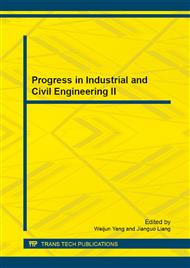p.474
p.478
p.483
p.491
p.495
p.499
p.507
p.511
p.521
Experimental Study on Backwater in Cavity of Aerator on Chute with Mild Slope
Abstract:
Aerator is often used in the spillways or tunnels to protect these discharge release works from cavitation damage. But for the flow chutes with mild bottom slope, the backwater may occur easily in the aerators cavity. There are a lot of factors to influence the backwater in the cavity. Based on the model experiments and analysis, the backwater in the bottom aerators cavity on the chutes with mild bottom slope and some influence factor to the backwater are investigated. The research presented in this paper provides some laws of how backwater exists in the aerators cavity and how to reduce backwater in the cavity. Results show, in the case of other conditions remain unchanged, flow discharge is inversely proportion to the depth of backwater, and the takeoff angle of aerator affects the depth of backwater larger than the slope of chute; the greater the flow discharge is, the lower the depth of backwater. And the depth of backwater increases with aerator height. More attention should be paid to the backwater in the cavity for the chute with small bottom slope.
Info:
Periodical:
Pages:
495-498
Citation:
Online since:
September 2013
Authors:
Keywords:
Price:
Сopyright:
© 2013 Trans Tech Publications Ltd. All Rights Reserved
Share:
Citation:


